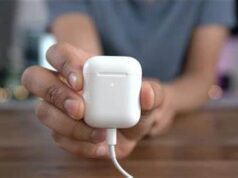The wearable tech industry has witnessed remarkable growth in recent years, with Statista projecting its value to reach a staggering $1.105 billion by 2022. While smartwatches have dominated the market, it’s not just dedicated joggers driving this surge. The potential of wearable tech extends beyond fitness tracking and personal health monitoring. One primary application for the data collected by these gadgets is revolutionizing how fans engage in live sports betting.
The integration of wearable tech data into live betting platforms is nascent. While no comprehensive platforms directly incorporate raw data from wearable devices to influence live in-play betting options, the potential is immense. Challenges such as data integration, data interpretation, and the reliability of mobile live betting platforms must be addressed. However, the convergence of wearable tech and sports betting seems inevitable.
For athletes, wearable tech acts as a personal coach, allowing them to optimize their training routines, improve technique, and prevent injuries. But its impact on sports betting lies in its ability to provide bettors with additional information to make more informed predictions.
By analyzing the data collected from wearable devices, enthusiasts can evaluate an athlete’s current form, recovery rate, and potential performance in a game. This newfound information can be a game-changer when it comes to placing bets.
The following sections will discuss cutting-edge wearable technologies transforming the sports industry.
Fitness Trackers: Tracking Beyond Steps
Fitness trackers track various metrics beyond steps. Athletes can monitor their distance covered during workouts or training sessions, allowing them to set distance-based goals and track their progress over time. This information is handy for endurance athletes who must measure their mileage and gradually increase their training volume.
Calories burned are another essential metric that fitness trackers can accurately track. By monitoring calorie expenditure during workouts, athletes can better understand their energy balance and adjust their nutrition. This information is precious for athletes who need to maintain a specific weight or optimize their nutrition for performance.
Many fitness trackers now offer sleep-tracking features, providing insights into sleep duration, quality, and even different sleep stages. Athletes can use this data to evaluate the effectiveness of their sleep habits and make necessary adjustments to ensure optimal rest and recovery.
In addition to tracking basic metrics, fitness trackers often include features such as guided workout routines. These devices can provide real-time feedback and coaching tips and suggest personalized workouts based on an athlete’s goals and fitness level.
GPS-Enabled Wearables: Unlocking Performance Insights
GPS-enabled wearables have transformed the way athletes monitor and analyze their performance. These cutting-edge devices go beyond basic tracking to provide athletes with accurate measurements of their speed, distance covered, and movement patterns. By harnessing advanced algorithms, GPS data can be analyzed to unlock valuable insights into an athlete’s positioning, running efficiency, and performance across different areas of the field or court.
With the help of GPS-enabled wearables, athletes can delve into the intricacies of their movement patterns and identify key performance indicators. They can assess their speed and agility, analyze their positioning on the field, and evaluate their running efficiency. This level of granular data allows athletes to pinpoint specific areas that need improvement, whether it’s refining their acceleration, optimizing their route running, or making more effective decisions on the field.
Smart Clothing: A Closer Look at Athlete Movement
Smart clothing embedded with sensors has emerged as a game-changer in sports technology. These garments can capture body movement, muscle activation, and posture data. By analyzing this data, athletes, and coaches can gain valuable insights into their technique, biomechanics, and potential injury risk areas.
Smart clothing can also facilitate real-time feedback during training, helping athletes adjust their movements immediately. Such information is invaluable for injury prevention, skill development, and performance enhancement.
With the ability to track and analyze athlete movement, smart clothing can also offer convenient payment options for sports betting enthusiasts. By incorporating PayPal functionality into smart clothing, bettors can seamlessly make payments for their bets on betting sites that accept PayPal without needing additional devices or payment methods. This integration ensures a streamlined and secure transaction process, allowing bettors to focus on their betting strategies while enjoying the comfort and functionality of smart clothing.
Smart Helmets: Protecting Athletes on the Field
Smart helmets have revolutionized athlete protection, incorporating advanced sensor technology to monitor impact forces and head acceleration. These helmets provide valuable data that can help medical staff, and coaches assess the severity of impacts and identify potential concussions or other head injuries. By analyzing this data, athletes can receive immediate attention and appropriate medical care, reducing the risk of long-term damage.
In the context of sports betting, smart helmets offer an additional layer of information for bettors to consider. By evaluating an athlete’s history of head impacts and related health data, bettors can gain insights into an athlete’s vulnerability and potential performance impact. This information allows bettors to make more informed predictions and betting decisions, considering the potential risks associated with head injuries and an athlete’s recovery status.
Biometric Sensors: A Window into Athletes’ Health
Biometric sensors integrated into wearable tech provide valuable data on an athlete’s physiological responses. Heart rate monitors, for example, can give insights into an athlete’s exertion levels, recovery rates, and overall cardiovascular health.
By monitoring this data, athletes can better understand their body’s response to different training intensities and adjust accordingly. This information is crucial for preventing overexertion and optimizing training programs to improve performance.
Hydration Monitoring Devices: Ensuring Proper Fluid Intake
Hydration monitoring devices, often worn as wristbands or attached to water bottles, track an athlete’s fluid intake and hydration levels. To provide personalized hydration recommendations, these devices consider environmental conditions, exertion levels, and individual sweat rates. Proper hydration is critical for performance, as dehydration can lead to decreased endurance, muscle cramps, and impaired cognitive function.
Cutting-edge wearable tech is transforming the sports betting landscape, enhancing athlete performance, and promoting healthier competition. As technology continues to evolve, we can expect even more innovative wearable devices to revolutionize how we train, perform, and engage with sports betting. The future is bright, and the possibilities are endless for this exciting intersection of technology, sports, and betting.








![Excel cannot Open the File Because the Extension is not Valid Error [Fix 2024]](https://www.techpreview.org/wp-content/uploads/2024/04/Excel-cannot-Open-the-File-Because-the-Extension-is-not-Valid-Error-238x178.jpg)









